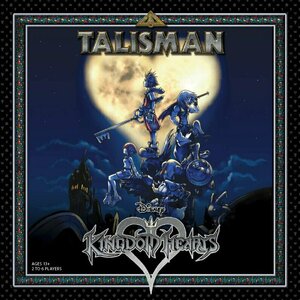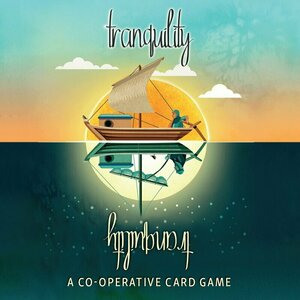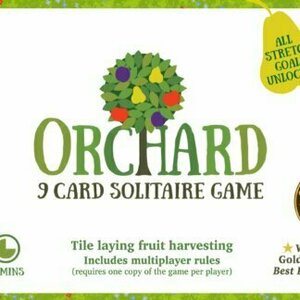Purple Phoenix Games (2266 KP) rated Talisman: Kingdom Hearts in Tabletop Games
Dec 10, 2020
In Talisman Kingdom Hearts (which I will now call simply Talisman for this review) players will be taking on roles of Kingdom Hearts characters to traverse the world with the ultimate goal of reaching the Door to Darkness and sealing it forever. The player who seals the Door ends the game, but it does not necessarily mean they will win this semi-cooperative-but-mostly-competitive roll-and-move game.
DISCLAIMER: We were provided a copy of this game for the purposes of this review. This is a retail copy of the game, so what you see in these photos is exactly what would be received in your box. I do not intend to cover every single rule included in the rulebook, but will describe the overall game flow and major rule set so that our readers may get a sense of how the game plays. For more in depth rules, you may purchase a copy online or from your FLGS. -T
To setup, follow the instructions in the rulebook. Each player will either be dealt a character at random or may choose from the 11 characters in the box. The gigantic board goes wherever it will fit on the table, and the decks of cards are to be shuffled and stacked nearby. The Object cards will be separated by type and placed face-up near the face-up pile of Keyblade cards. Players will adjust their Stat Dials to match the starting stats printed on their character card and the game is ready to begin!
Talisman is a game played over a series of many very quick turns. Each turn is comprised of two phases: Movement and Encounters. During the Movement phase within the Outer and Middle Regions the active player will roll 1d6 and decide to move clockwise or counter-clockwise that many spaces around the board. Once within the Inner Region players will move one space at a time and no longer need to roll. Once a player lands on a space they will have Encounters while stopping.
Encounters on a space may involve several cards in play. Spaces on the board will have written instructions or merely iconography to instruct players what to do on each space. If drawing an Adventure Card from the deck, the active player may come across enemies to fight, followers to recruit, or even items to help in their journeys.
Combat is pretty slick and easy in the game: the player has a base Strength or Magic stat on their dials to which is added the result of a die roll. Compare this to the enemy’s matching base stat plus their roll. The larger result wins the combat. The player takes the enemy card as a trophy when they win, and loses a Health value when they lose and the enemy typically stays on the board space until defeated.
Play continues in this way (with a few more surprises along the way that I will have you play to discover on your own) of taking turns moving and encountering spaces until one player seals the Door to Darkness. Players are then awarded VP for various numbers of cards, where they end up on the board, stat differentials, and other means. The player with the most VP wins the game!
Components. This is a large box and comes with several different types of components. The first is a monstrously-sized game board that takes up a lot of space. That’s not at all bad, but it is certainly a busy board. There is so much information and artwork on the board, and also may have tokens set upon it to be linked to cards on the table. With over 200 cards in the box along with player character cards, stat dials, and 11 plastic minis you get a lot in the box for your money. I would say that all of the components are of excellent quality and I have no qualms with any of them aside from the very large and very busy main board.
I have some good and bad news here. First the bad. This plays somewhat similarly to a game I happen to have very lukewarm feelings for: Jim Henson’s Labyrinth. In both games players are rolling a die and deciding which direction to travel in order to have an encounter on the space. Combat is decided primarily by stats and die rolls with only the Fate tokens in Talisman to assist with a re-roll of one die. Combine that with the frustration of needing to land exactly on a space on the board in order to progress to the next Region inward and players may be volleying themselves back and forth trying to roll just the right number to hop into the Middle or Inner Regions.
That all said, I still do enjoy this game. Yes, I like it because of the art and the theme. I have always said that I prefer my games to have great art and a great theme before I start to care about mechanics and other attributes. This is a case in point. I love the look of the game, the table presence, the Kingdom Hearts IP, and I typically do not gravitate toward roll-and-move games. But, there is enough in Talisman that it keeps me interested in playing more and more. I will eventually be able to play with all of the different characters to experience their own unique special abilities and select a character with whom I most relate. I think I will enjoy that journey.
I can also play this game with my wife pretty readily, and that is a huge positive for me. I know that in time my children will be able to play this game without much arm-twisting as well as we are a huge Disney household. The rules are relatively light, and the rulebook does a great job of breaking everything down. That said, Purple Phoenix Games gives this one a hybridized and limit broken 9 / 12. If you love the Kingdom Hearts IP, or the Talisman games, or even games to introduce to newer players, then you need to take a look at Talisman Kingdom Hearts. I am still discovering things in the game that I hadn’t noticed on previous plays and that keeps me coming back for more. You won’t feel the brain burn here but you will have a great time having Chip ‘n Dale, Dumbo, and Tinkerbell following you along your adventure.
Purple Phoenix Games (2266 KP) rated Tranquility in Tabletop Games
Oct 21, 2021
Tranquility is a cooperative hand management, tile placement card game for one to five players. In it players will be attempting to create a sea of islands around which they sail their boat towards infinite paradise. They will accomplish this by laying numbered cards from their hand in numerical order before any of the players run out of chances to play a card. Oh, and there’s also no talking during the game. That’s kind of a big deal.
DISCLAIMER: We were provided a copy of this game for the purposes of this review. This is a retail copy of the game, so what you see in these photos is exactly what would be received in your box. I do not intend to cover every single rule included in the rulebook, but will describe the overall game flow and major rule set so that our readers may get a sense of how the game plays. For more in depth rules, you may purchase a copy online or from your FLGS. -T
To setup the standard game, place all the border cards around a 6×6 grid, as in the photo below. Shuffle the appropriate number of Start and Finish cards into the deck of Island cards and place that beside the grid. Draw a hand of five cards and the game may begin. Setup is similar to the multiplayer setup, with a few changes. Once the hand of cards has been drawn, the game may begin! It is the solo player’s goal to build the sea of island cards, and place the Start and Finish cards before they run out of cards to be legally played.
The game is played over many turns. Each turn players will be either playing a card from hand or discarding two cards. When a player plays a card from hand to the grid, they may place it anywhere they wish within the grid. The goal is to have each card placed numerically in order beginning from the lower left of the grid in a zig-zag pattern left to right, then ascending to the next highest level. In other words, the play area would be ordered numerically as English-speaking people read, but from the bottom up instead of the top down – like a reverse typewriter.
When a card is played, the player may choose to place it in its own area, or immediately next to another card already in play. If the new card is placed adjacent to an existing card, the player must discard cards equal to the difference between the values of the two adjacent cards. For example, if a 12 is placed next to a 14, then the player would need to discard two cards after placement. If a card is placed that is already in direct numerical order, no discards are needed. Again, a card at the right-hand edge of a row is adjacent to the card on the next row higher on the left-hand edge, and this is the most difficult aspect of the game to grasp for new players.
Should a player instead wish to discard two cards for their turn, they do so to their discard pile. After each action (playing a card or discarding two cards) the player will draw back up to their hand of five cards.
Eventually, the player will happen across the Start and Finish cards. In the solo game, when a Start card is placed (outside the grid, but in amongst the border cards in the lower left-hand corner), the player will need to draw eight cards from the draw deck, keep four, and discard the remaining eight. This eats up cards from the draw pile and draws the game closer to the end. When the grid is completed and all the numbered cards are in numerical order, the player may then play the Finish card to end the game. If all cards are properly placed the player wins! If not, they must try again. Probably immediately, because it is that kind of game.
Components. This game is a bunch of square cards in a cubic box. Now, while that doesn’t sound super exciting, the art on the cards certainly make up for the lack of component diversity. Each card is matte finished, which I prefer for cards with great art on them. And oh man, that art is something wonderful! I have always been a fan of Tristam Rossin’s art, and it is on full display here. The cards are, well, I guess I cannot find the correct word because they aren’t double-sided, but split on the horizontal, with a daytime scene on the “top” and a nighttime scene on the “bottom” (or vice-versa, however you feel). I have nothing but praise for the components here.
The gameplay is familiar in feel, but definitely a little different and a whole lot of fun. Fans of The Mind will find this familiar in that the game is structured around silent players building a grid/stack of numerically appropriate cards until the win condition is met. However, I have not been able to play The Mind solo, and Tranquility comes with solo rules in the box. So that’s a win in my book.
Now, Tranquility solo is no cakewalk. No, there are no other players to make crazy decisions to throw off any tactics planned, but you most certainly can misjudge where to place a card, and then be married to its position as you try to fill in all the appropriate cards around it. I learned that all too early when I decided my first game that I should try to divide the grid into equal sections and approximate where a 48 should go. Well, I’ll tell you now that a 48 has absolutely no business being a row above a 19 (check the photo above if you don’t believe me). Silly choices like this make for an afternoon of pondering optimal placements when unboxing your next play, and that brings a smile to my face. Any time I think about a game the next day or several days later and it entices me to play again with a different strategy, I feel is the mark of a great game.
I have yet to play this with a group (damn COVID), but I know the people I play with are going to love this one. And, honestly, I am going to love the peace and quiet as the game plays out, so I can think about my turn and then think about a different possibility once someone ruins my plans. But I tell you what, even as a solo game, this one is great. I am quite happy to keep this as a pure solo experience, but I do want to try it once with others. We do not typically give out ratings for Solo Chronicles reviews, but this one would be pretty high, I’m telling you now. Okay, I have to go get the boat ready and pack my cooler. Enjoy Tranquility!
Purple Phoenix Games (2266 KP) rated Orchard: A 9 Card Solitaire Game in Tabletop Games
Mar 1, 2022
Orchard: A 9 Card Solitaire Game (simply Orchard from here on out) is a solo game where the player is attempting to harvest the most fruit from trees that are bred for high yield. As there are no players to play against, the player will instead compare their ending score with a table in the rulebook. Will the player’s game result in a “Pal-tree” score or will they score enough to be considered “Almost imposs-apple!”?
To setup, place the dice and Rotten Fruiteeple on the table. Shuffle the 18 cards, deal two decks of nine cards (two games worth), and choose a deck to play. Flip the first card over to start the orchard, shuffle the remaining cards and draw two into hand. The game is now setup and ready to begin!
Turns in Orchard could not be simpler: Play a Card, Place Dice, Draw a Card. From the two-card hand, choose one to be placed in the orchard with one very important rule: the newly-placed card must overlap another card in the orchard by overlapping matching tree types. So, a card can only be placed if the apple tree overlaps an apple tree, etc. More than one icon may overlap the existing card, but each icon must match types below it.
Once the new card has been placed, for each icon overlapped, a die matching the fruit type is placed on the icon. If this is the first time the tree has been overlapped, the die face is placed with value 1 showing. However, the die will increase in value each subsequent time it is overlapped (total die values of 1, 3, 6, 10). Therefore, when a card has been overlapped four times on the same icon, the maximum number of points has been reached for that icon. Should a player wish instead to forego any die placement and be unable (or unwilling) to place a card correctly, they may place any card, overlap an icon, and then add a Rotten Fruiteeple atop the mismatched icon. This spoils the fruit for the remainder of the game, so no further dice may be placed upon it, and also reduces the final score by three VP at game end for each token placed.
Finally, when the card and die have been placed, the player draws another card into their hand. When the final card has been played, or no further legal placements can be made, the game ends and the player totals up the dice values to arrive at their final score.
Components. This game is 18 cards of good quality, a bunch of custom dice, and two Rotten Fruit meeples. Everything is good quality and size, and it fits into a really cool sliding deck-box. The art, for me, is fine. The colors match fruits from the real world, and the dice match those color well enough too. I feel like different fruit choices could have been made to increase accessibility for our color-blind gamer friends. The plums and apples are both small and round (with an ever-so-slight different shape on the apple). I don’t know what other fruits would have been more appropriate – I’m not a botanist. Similarly, the dice are custom made with the pips looking like a plum or apple, and two sides of the dice showing a leaf icon. Perhaps in the interest of differentiation, instead of the leaves, the different dice colors could instead show the matching fruit style (if only the plum and apple looked differently enough). So instead of leaves, the red dice could show apples, the yellow dice could show pears, and the purple dice could show, I don’t know, eggplants? I am not color-blind, so these do not affect me, but it is something I have taken to commenting on as I review more and more games.
All in all, Orchard is a really good little game of overlapping and puzzling out next moves. The games are super-quick and engaging, and I always want to improve my score each time I play. When a game forces me to play again and again I feel it is a sign of a good game. I have plans to keep this one in its own special place where I can just grab it and go, instead of being dwarfed by my collection of much larger game boxes. If you are like me and pine for good solo play, then perhaps you should check out Orchard: A 9 Card Solitaire Game. The rules are light, game play is simple and fast, and it keeps drawing me in every time I look at the box.
Also let me know your highest score because I apparently am trash at this game, even though I really enjoy playing it. Have you scored in the top tier? Those must be some delicious fruits.
Johnny Marr recommended track No Solutions by The Only Ones in Even Serpents Shine by The Only Ones in Music (curated)
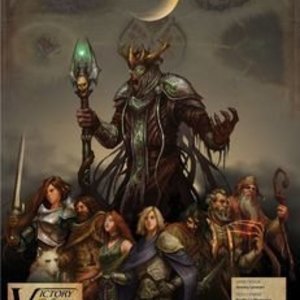
Darkest Night (First edition)
Tabletop Game
Darkest Night, by designer Jeremy Lennert, is a fully-cooperative board game for one to four players...
Purple Phoenix Games (2266 KP) rated Unmatched: Cobble & Fog in Tabletop Games
Mar 19, 2021
In Unmatched: Cobble & Fog (which I will be calling Unmatched from here) players will be taking on the roles of either Dracula and his Sisters, Sherlock Holmes and Dr. Watson, Invisible Man, or Dr. Jekyll and Mr. Hyde in a battle to the death to claim victory in this, “Who would win in a fight”-style skirmish fighting game. The last hero standing wins, so as one of my favorite characters in literary history says, “The game is afoot.”
DISCLAIMER: Even though this review is for the Cobble & Fog version of Unmatched, the rules are the same throughout the entire Unmatched family of games. I have the original Unmatched: Battle of Legends, Vol. 1 and it plays exactly the same. I prefer the characters in this version, so that’s why I am reviewing it specifically. -T
To setup, the players will choose which side of the board they wish to play and set it on the table. Next, players will choose their hero and gather all accoutrements associated with their choice. All heroes come with a deck of 30 action cards, a mini of their figure, a character card, at least one health dial (more if their sidekicks have more than one health point), and some characters will have sidekicks that have tokens, or tokens for other reasons. The youngest player places their mini on the space with the number 1 on the board, and then the rest of the players place theirs on subsequently-numbered spaces. Players shuffle their decks of action cards and draw five cards for their first hand.
On a turn a player may take two actions from the choice of: Maneuver, Scheme, Attack. When a player chooses to Maneuver they will draw a card into their hand, then move the amount of spaces noted on their character card (typically two spaces). These movement values may be boosted by also discarding additional cards for their boost value and adding it to the number of spaces moved.
All action cards will specify which character may use it for attack, defense, or Scheme action. These Scheme cards have a lightning bolt icon on them to indicate that they are played face-up to the table, resolved, and then discarded.
Finally, if a melee-based character is positioned adjacent to an opponent, or if a ranged character is in the same zone as an opponent, they may Attack said opponent. To Attack, the active player declares which opponent will be attacked, and each player involved will choose cards from their hands to use in the battle. The attacking player will need to use attack or versatile (either used for attack or defense) cards to try to inflict damage, while the defending player will need to play defense or versatile cards in defense. The difference of the values printed on the cards will determine which character wins the battle and if health points are to be deducted from the health dial.
Many cards will have action instructions that trigger either immediately during battle or even after the battle concludes. Resolve these actions when appropriate and try to stay on your feet.
Play continues in this fashion of moving around the board to gain cards or using the cards to scheme or attack/defend. The winning player is they who survives at the end and vanquishes all foes on the board.
Components. I love everything about the components in this game. The box is great. The insert is really incredible and well thought out. The cards are great quality and the game features spectacular art all around. The minis are cool and luckily are fitted inside colored bases to remind players which mini is theirs. The sidekick tokens are excellent thick plastic and color-matched to the bases of their hero counterparts. The board is nice and double-sided, and all the rest of the cardboard components are excellent.
It’s no secret here – I absolutely love this game. I have always been a big fan of Sherlock Holmes, and this set also includes other interesting characters to play. Each one is highly unique in style and that’s one of the reasons I am so intrigued by this system. I say system because this is not the only game in the Unmatched family. As of today the Unmatched system boasts all of these as playable characters from different sets: King Arthur, Alice, Medusa, and Sinbad from the “Battle of Legends, Vol 1” set; Robert Muldoon and raptors from the “Jurassic Park, InGen vs Raptors” set; the “Robin Hood vs Bigfoot” set; Bruce Lee; and Buffy, Spike, Willow, and Angel from the “Buffy the Vampire Slayer” set in addition to these here. I know more Jurassic Park sets are on the horizon, and I just cannot wait to see what other sets will be released in time.
Why do I love this game so much when I am not really a fan of moving and dueling games (I’m looking at you Mage Wars)? In these style of games I feel the movement is unnecessary as I just stand and fight. In this system, the only way to draw more cards from your deck is to enact the Maneuver action. There have been several times where I didn’t necessarily want to initiate a battle, but I saw opponents sitting with no cards in their hand. That means no defense cards can be played. Easy chunks of health taken by picking off the stationary few. Unmatched forces players to move around and I love that. Yes, there are opportunities to unleash giant blows or have double-digit health drops in battle, and that’s just delicious. Also there are times during play where mathing out exactly where to place your mini or sidekick is paramount to lay plans of ambush.
I mentioned earlier that I knew right away I would love this one. Opening the cover of the rulebook sold me immediately. As this set utilizes literary characters found in old timey Europe the game utilizes a period art style as well and I’m still fawning over it. Everything clicks for me and I can now understand why so many people were dying (not literally) to get copies of the game Unmatched is based on, Star Wars: Epic Duels. It is extremely fun and each character is interesting and unique. Purple Phoenix Games gives this one a well-earned GOLDEN FEATHER AWARD! If you need a skirmish style game with excellent theme and art, you must grab this post haste. If you and I fall on the same side of the coin with our gaming preferences you NEED to have this in your collection.
I don’t know how many other sets I will be looking to add to my collection at this point, but I cannot tell you how excited I would be to pit Bigfoot against Bruce Lee. Or King Arthur against Dracula. It just feels epic and wonderful. Great job to the team at Restoration Games. This is a huge win for my collection.
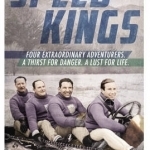
Speed Kings
Book
In the 1930s, as the world hurtled towards terrible global conflict, speed was all the rage. It was...

Badass: Making Users Awesome
Book
Imagine you're in a game with one objective: a bestselling product or service. The rules? No...
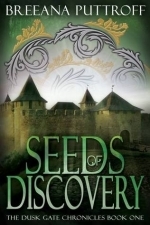
Seeds of Discovery
Book
Quinn Robbins' life was everything she thought a teenager's should be. She has good friends, a...
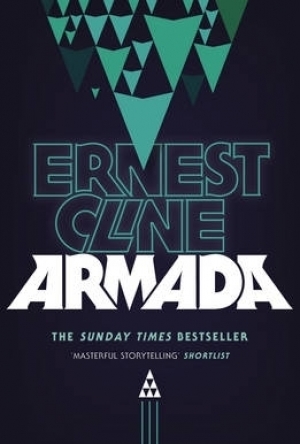
Armada
Book
This is the New Novel From The Bestselling Author Of Ready Player One. It's just another day of high...
Sci-Fi Video Games Aliens Military
